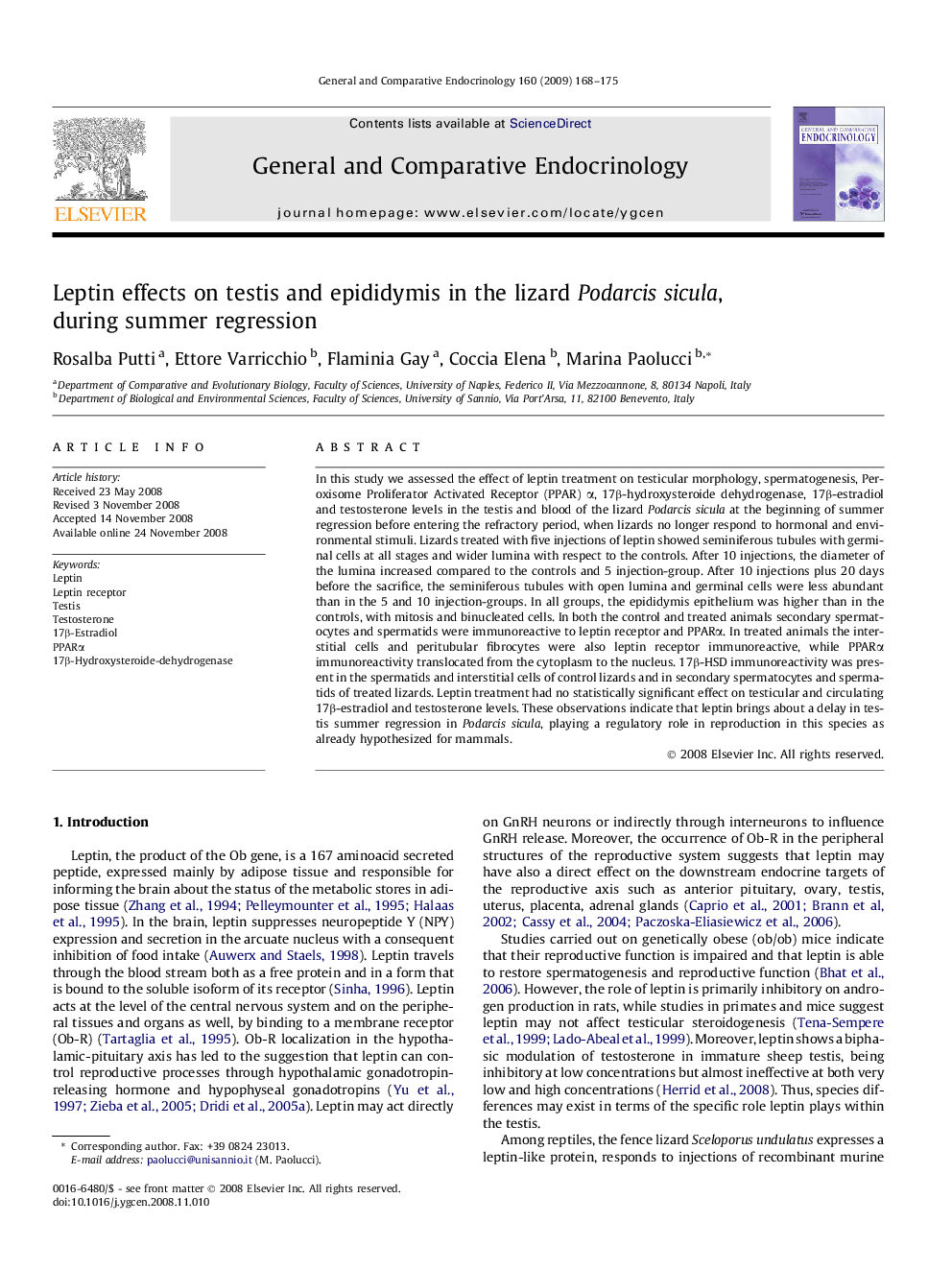| Article ID | Journal | Published Year | Pages | File Type |
|---|---|---|---|---|
| 2801621 | General and Comparative Endocrinology | 2009 | 8 Pages |
In this study we assessed the effect of leptin treatment on testicular morphology, spermatogenesis, Peroxisome Proliferator Activated Receptor (PPAR) α, 17β-hydroxysteroide dehydrogenase, 17β-estradiol and testosterone levels in the testis and blood of the lizard Podarcis sicula at the beginning of summer regression before entering the refractory period, when lizards no longer respond to hormonal and environmental stimuli. Lizards treated with five injections of leptin showed seminiferous tubules with germinal cells at all stages and wider lumina with respect to the controls. After 10 injections, the diameter of the lumina increased compared to the controls and 5 injection-group. After 10 injections plus 20 days before the sacrifice, the seminiferous tubules with open lumina and germinal cells were less abundant than in the 5 and 10 injection-groups. In all groups, the epididymis epithelium was higher than in the controls, with mitosis and binucleated cells. In both the control and treated animals secondary spermatocytes and spermatids were immunoreactive to leptin receptor and PPARα. In treated animals the interstitial cells and peritubular fibrocytes were also leptin receptor immunoreactive, while PPARα immunoreactivity translocated from the cytoplasm to the nucleus. 17β-HSD immunoreactivity was present in the spermatids and interstitial cells of control lizards and in secondary spermatocytes and spermatids of treated lizards. Leptin treatment had no statistically significant effect on testicular and circulating 17β-estradiol and testosterone levels. These observations indicate that leptin brings about a delay in testis summer regression in Podarcis sicula, playing a regulatory role in reproduction in this species as already hypothesized for mammals.
